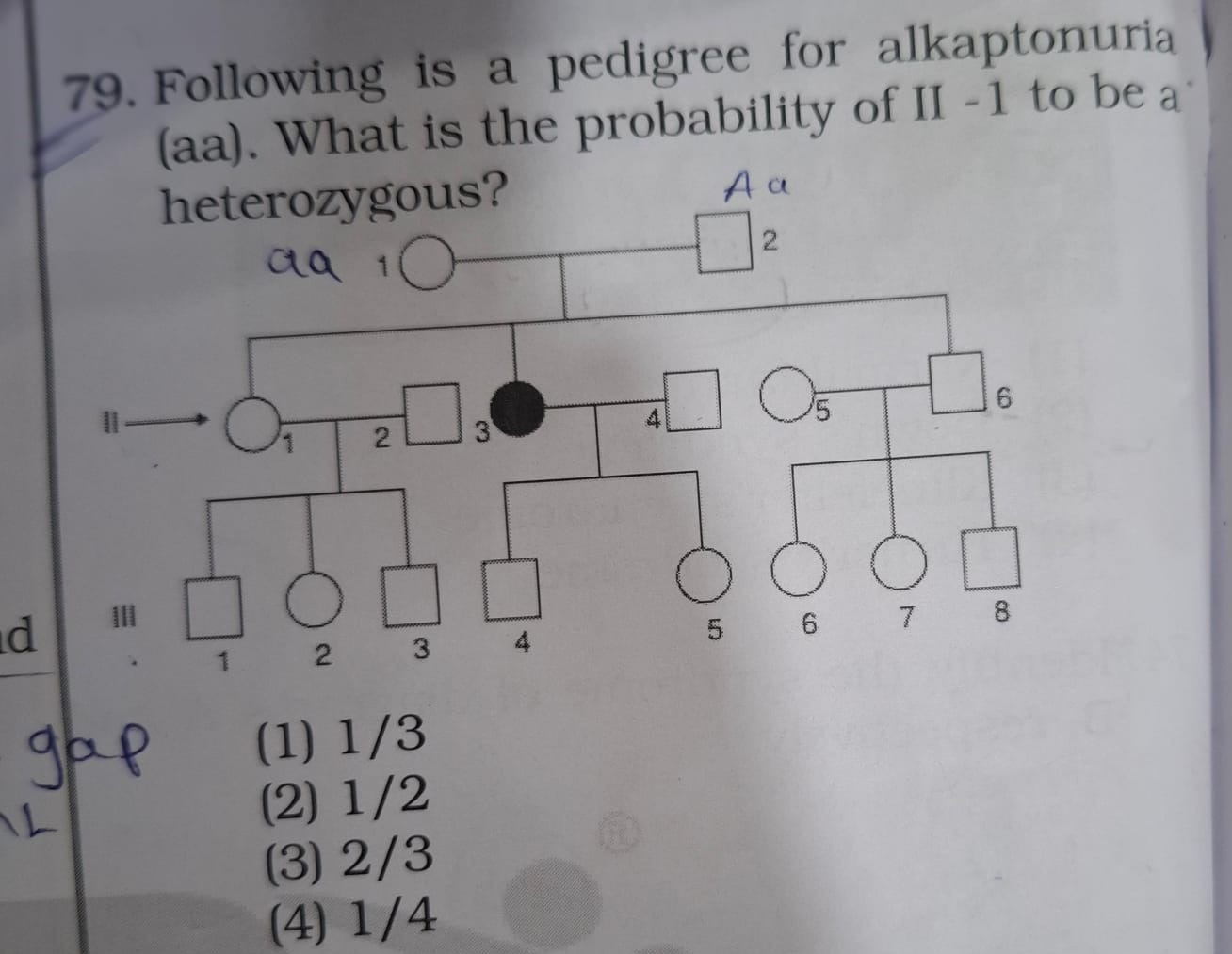Question
Question: Following is a pedigree for alkaptonuria (aa). What is the probability of II -1 to be a heterozygous...
Following is a pedigree for alkaptonuria (aa). What is the probability of II -1 to be a heterozygous?

A
1/3
B
1/2
C
2/3
D
1/4
Answer
2/3
Explanation
Solution
- Identify the inheritance pattern: Alkaptonuria is a recessive genetic disorder, meaning individuals with the genotype 'aa' are affected, while individuals with at least one dominant allele 'A' (genotypes 'AA' or 'Aa') are unaffected.
- Analyze individual II-1: Individual II-1 is an unaffected female.
- Analyze the parents of II-1: Individual II-1 is a child of the first couple in Generation I. Let's call them I-1 (male) and I-2 (female). Both I-1 and I-2 are unaffected.
- Interpret the label "aa" near Generation I: The notation "aa" written in blue ink near the first couple of Generation I is interpreted as an implication that this couple are both heterozygous carriers for the recessive trait. Thus, their genotype is assumed to be 'Aa' x 'Aa'.
- Calculate probabilities for offspring of 'Aa' x 'Aa' parents: For a cross between two heterozygous individuals ('Aa' x 'Aa'), the expected genotypic ratio of their offspring is 1 AA : 2 Aa : 1 aa.
- Probability of AA = 1/4
- Probability of Aa = 1/2
- Probability of aa = 1/4
- Consider II-1's phenotype: Individual II-1 is unaffected. This means her genotype cannot be 'aa'. Her possible genotypes are 'AA' or 'Aa'.
- Calculate the conditional probability: We need to find the probability that II-1 is heterozygous ('Aa') given that she is unaffected.
- P(II-1 is Aa∣II-1 is unaffected)=P(II-1 is unaffected)P(II-1 is Aa AND II-1 is unaffected)
- Since 'Aa' is an unaffected genotype, P(II-1 is Aa AND II-1 is unaffected)=P(II-1 is Aa)=1/2.
- P(II-1 is unaffected)=P(AA)+P(Aa)=1/4+1/2=3/4.
- Therefore, P(II-1 is Aa∣II-1 is unaffected)=3/41/2=21×34=32.
